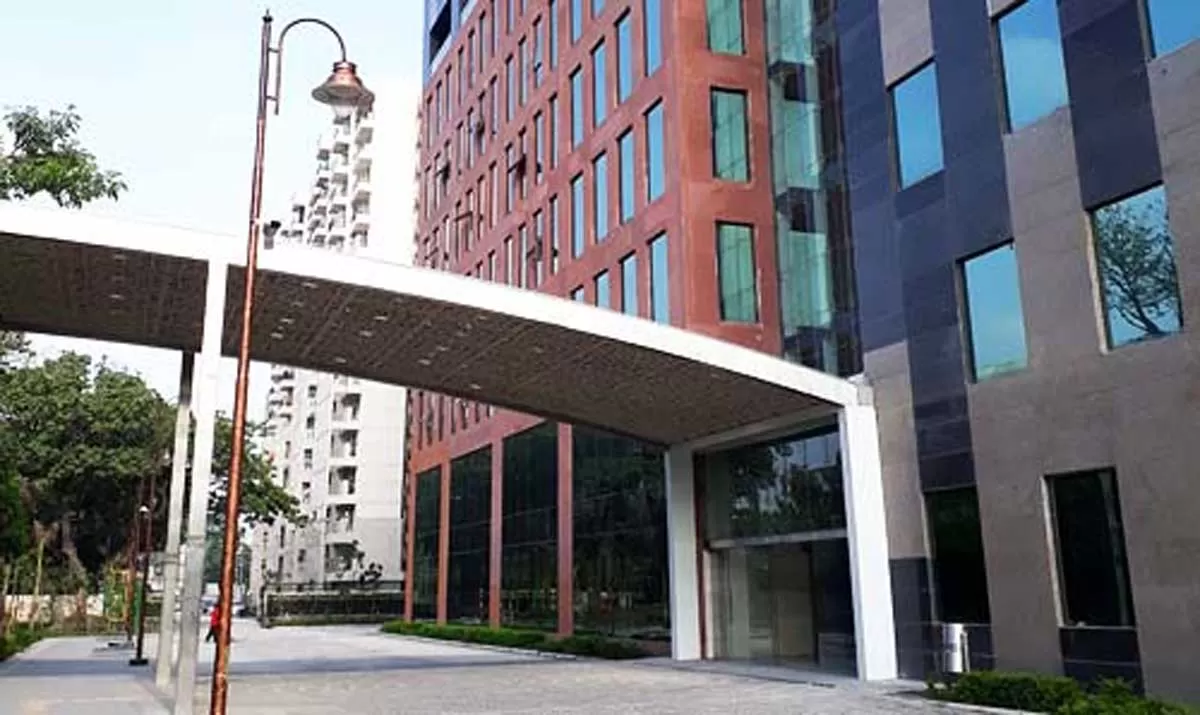Construction technology can saves money and reduce waste through optimisation and efficiency, avers PRAVEEN TOMY.
Tata Realty and Infrastructure Limited (TRIL), a subsidiary of one of India’s largest conglomerates Tata Sons, has a mission to “be a transformative enterprise in the real estate and infrastructure space, creating extraordinary value for stakeholders”. And they're using construction technology to help them get there.
To achieve their mission, TRIL is dedicated to efficiency and quality through continuous improvement. “In today’s competitive world, it is important to differentiate yourself by setting industry benchmarks,” says Prakash Patil, Head, Projects Department, TRIL. “The known secret for this is to ‘achieve more with less’, as we all work with limited resources. In my opinion, about 30 per cent of costs can easily be saved on construction projects by simply removing waste. Adopting lean principles is one way to reduce such waste through optimisation and efficiency.”
BIM 360 and BIM with AEC are tools that work on such lean principles, bringing efficiency from design, construction and documentation through final handover of projects to facility management and end users. Early adoption of BIM 360 and BIM in projects can bring huge time and cost savings during construction. Further, as it’s a Cloud-based platform, it’s a central repository for up-to-date data at your fingertips.
Using construction technology to set industry benchmarks
On individual projects, TRIL deployed a lean management team that consists of a project head and a maximum of six other governance heads for respective verticals. Even with that dedicated leadership, project management is a feat of collaboration as projects can involve over 30 specialised trades for complex builds.
One such example is the development of TRIL IT City, a 5 million sq ft ITeS/SEZ integrated campus development located in Gurgaon. It has six blocks of IT buildings with a sprawling basement that interconnects them all. Phase 1 (3.5 million sq ft) was completed earlier this year.
Effective project management and collaboration for a project like TRIL IT City were critical to ensure efficient handoffs and meet timelines. One of TRIL’s biggest challenges in managing design and construction was the coordination and integration of data across the project lifecycle.
“To meet our goals for a project like TRIL IT City, we needed to evolve how we project-manage and coordinate scheduling, estimating and design. We wanted more certainty and the one thing that haunted me the most on this project was fragmented data,” says the AGM of Planning & Coordination at TRIL.
Therefore, TRIL made the strategic decision to digitise their processes and improve data management for more efficient project management and design collaboration. Before even selecting BIM 360 as the platform for this initiative, a governing committee—the APEX team—was created by Patil. The committee set forth on technology selection and defining a strategic approach to implementation. The company also tagged TRIL IT CITY as the project to pilot implementation. “Implementing these tools requires a lot of passion, dedication and involvement,” says Patil. “My entire team demonstrated this, which made our pilot project, TRIL IT City, a success.”
A roadmap to efficiencies in design and project management
After some deliberation, the team concluded that the BIM 360 construction management platform would ensure reliable data and provide an opportunity for real-time interactions between project team members to improve collaboration. “BIM 360 is a flexible platform that is easy for people to use and engage with,” says the AGM of Planning & Coordination at TRIL.
To pilot the solution, a subcommittee and facilitator teams were established with specific roles defined to drive forward implementation. With the management’s vision and the Autodesk technical team, training and assistance were provided to 40 design and project managers. This marked the first stage of deployment, as defined by the APEX team. In total, the defined rollout occurred through three measured phases: creating and engaging; standardising and refining; and stabilising and spreading. The training for piloteers was designed to upgrade software skills and gain real user input to digitise and standardise workflows within the Autodesk BIM 360 platform.
Using this approach of designing standard, digitised workflows across project phases, based on user input, TRIL piloted multiple BIM solutions simultaneously from design collaboration to construction project management. The goal was to have consistent, coordinated models for better project management and improve construction quality control and safety data management. Gaining stakeholder input during pilot phases was critical for TRIL in ensuring effective implementation. During this phase, standardising such items as folder structures and defining user access based on need and confidentiality requirements were key drivers of user adoption.
“We created a folder structure and access control for cloud data based on actual workflow and confidentiality requirements,” shares Patil. “Without the AGM of Planning & Coordination’s systematic thinking on structure and a cross-functional technology platform, we wouldn’t have moved as fast as we did.” For example, project management consultants, BIM managers and contractors were all invited to shift working from traditional 2D based design to 3D model coordination through a collaborative approach within the pilot phase. The feedback from these external stakeholders was essential to making the digitisation of TRIL’s project workflows meaningful. Following this, workflow improvements were made within design processes to suit the 3D model collaboration requirements.
Five ways construction technology made for easier collaboration
TRIL tracked multiple advantages across project phases of the newly digitised project management workflows. In each area of the project lifecycle, teams realised real-time savings, improved collaboration and decision-making and reduced risks of errors. These effects were felt in several specific ways.
1. Improved issue tracking and resolution: Instead of working through emails, trade managers were able to access and upload live data visible in the collaborative environment provided by BIM 360. “We also initiated communication between team members through the creation of ‘issues’ for problem-solving, clarity and data records,” adds the AGM of Planning & Coordination. This created transparency and saved the team time, so rather than tracking which issues were open or closed, they focused on resolution. It also reduced project risk as issues were routed to the source more quickly.
2. Efficiency in decision-making and data handoff: Before BIM 360, weekly reviews involved updates circulated via multiple emails. Now all the data for review across project stakeholders is captured in one location, viewable by all project teams. This, along with the screen-sharing option, allows everyone to be on the same page during the remote weekly review meetings. “BIM 360 has helped cut down the time for meetings, which now focus only on review, instead of both update and review,” says the AGM of Planning & Coordination. “By implementing BIM 360, we reduced our meetings from one hour to 20 minutes, which resulted in 60 per cent time savings.”
3. Improved design collaboration: When accessing work files, doing mark-ups, walkthroughs and even identifying points of conflict, “Autodesk BIM 360 Glue helped us solve in five minutes a design issue that earlier took two to three workshops of 20 people to solve,” according to the AGM of Planning & Coordination. Initially, when uploading and merging the models, Autodesk BIM 360 Glue revealed hundreds of clashes. Overwhelmed, the team almost gave up, but soon realised that design and drafting related clashes could be resolved easily within Revit. Though there was a learning curve initially in adopting this new workflow, the time saving was not the only benefit. The ability to resolve clashes at this stage in the project soon proved to make later phases simpler and minimise overall project risk, while improving quality.
4. Visual change management and validation: During the design phase, when the project team identified design issues with major project impacts, BIM’s visual 3D models offered easy and collaborative views that helped quickly validate the issues. This transparency was particularly helpful in gaining consensus when issue resolution required authorisation of time extensions or cost escalations.
5. Quality assurance and approval: TRIL has also digitised its quality assurance checklists and templates and project teams also approved method statements submitted by the contractors via digitised data shares and workflows.
Besides providing consistent data, ease of communication and saving time, TRIL also benefited from a massive reduction in paper use. This organic benefit of digitising workflows aligns with the company’s commitment to greater sustainability.
A world of possibilities
“Implementation of Autodesk BIM 360 has been a journey of exploring the potential and customising the platform to meet our requirements. None of us were technical experts to begin with, so there were challenges and learnings along the way,” says Patil. In the end, “those using the solution consistently found that it made their jobs easier,” remarks the AGM of Planning & Coordination.
With a rating of over seven out of 10, as per TRIL’s internally developed ‘Technology Usage Assessment Matrix’, the TRIL IT City project has been an upstart for TRIL’s efforts to streamline project management and design collaboration.
From what started as a pilot exercise in the initial ‘creating and engaging’ phase, implementation is now moving forward with efforts to further refine and standardise workflows. There are currently seven other TRIL commercial projects and 12 residential projects implementing BIM 360 solutions. With this outstanding rating from employees in the pilot phase, the APEX team is excited and ready to monitor how well it does in these further rollouts of the newly digitised workflows.
With the marked benefits of having a reliable data repository supporting smarter project management and design collaboration, the efficiency gains for TRIL are a win in delivering on their manifesto for excellence.
About the Author: Praveen Tomy, Director of Sales, Asia-Pacific, Autodesk Construction Cloud, is an APAC business leader with many years of experience providing software solutions to the construction industry. He has a proven track record of working in the Asian and Australian construction industries, providing strategic innovations to impact a company’s bottomline. He brings a wealth of experience to Autodesk Construction Cloud, having worked at leading technology organisations for the past 15 years, including Taleo and Oracle.


















